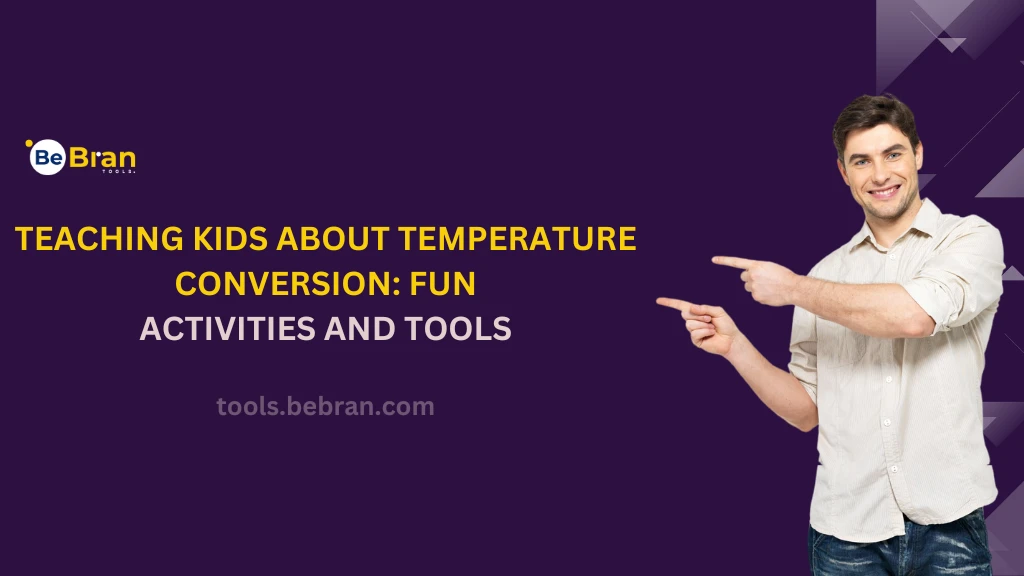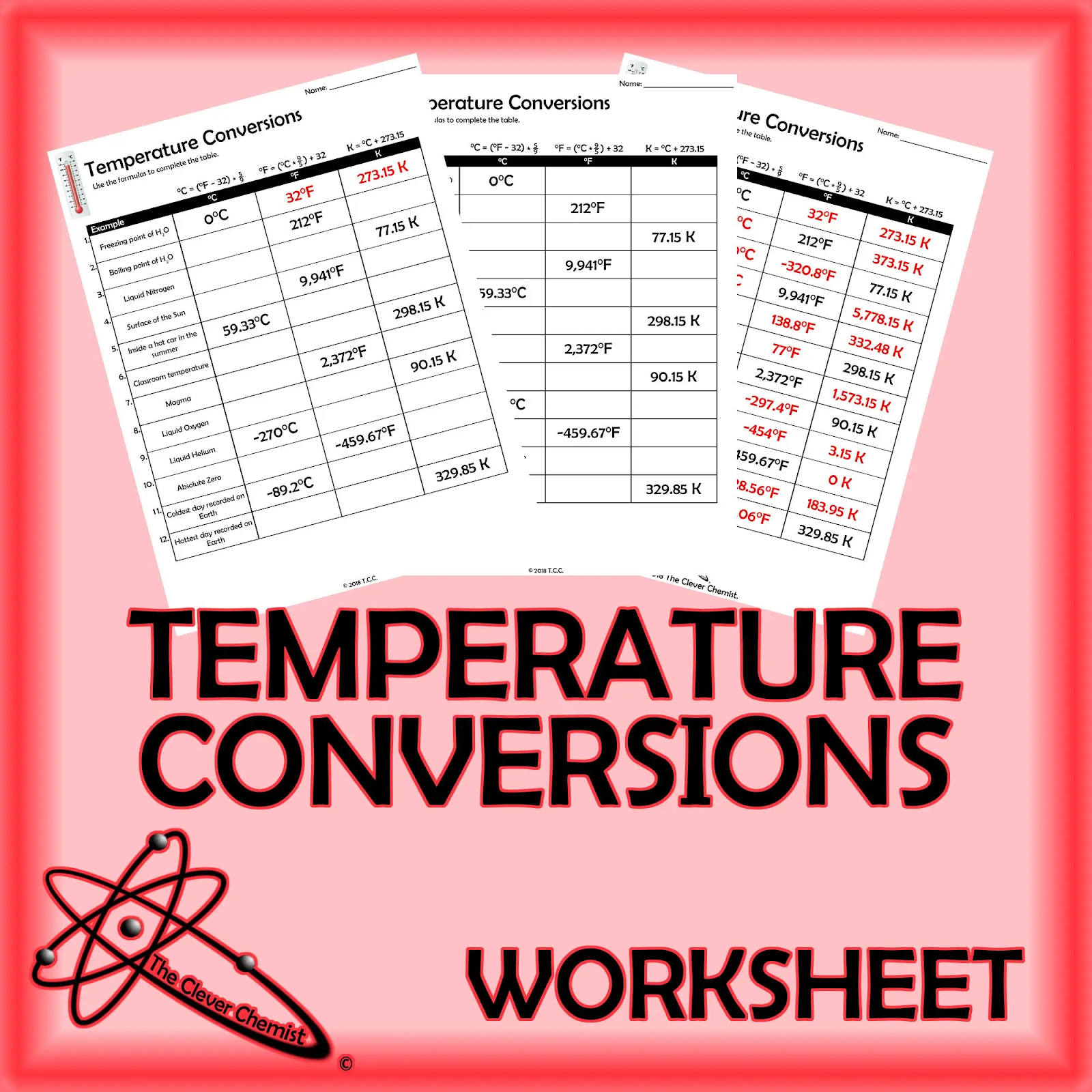
Teaching Kids About Temperature Conversion: Fun Activities and Tools
Teaching children about temperature conversion can be both educational and fun. Integrating engaging activities and tools can make the learning process more interactive and enjoyable for kids. Here's a guide on how to approach this topic in a way that's both informative and entertaining.
Temperature is a fundamental concept in science and daily life, and understanding how to convert temperatures between different scales is a valuable skill. This blog post will explore creative and engaging ways to teach children about temperature conversion tool, focusing on the Celsius and Fahrenheit scales. By using hands-on activities, visual aids, and digital tools, we aim to make this scientific concept accessible and fun for kids.

Understanding the Basics
Before diving into conversion techniques, it's crucial to explain the basics of temperature. Start by discussing what temperature measures – the warmth or coldness of an object or environment. Introduce the Celsius and Fahrenheit scales, explaining their origins and where they are commonly used. For example, Celsius is widely used around the world and in scientific contexts, while Fahrenheit is primarily used in the United States. Use visual aids like thermometers showing both scales to illustrate these points.
Check this out: Volume Converter Tools For Travelers Navigating Different Measurement Systems | Choosing The Right Voltage Converter An Online Tool Guide
Hands-On Activities
Ice and Boiling Water Experiment: Demonstrate the boiling and freezing points of water in both Celsius and Fahrenheit. Boil water and show that it reaches 100°C or 212°F. Similarly, use ice to demonstrate the freezing point at 0°C or 32°F. This visual demonstration helps solidify these key reference points in their minds.
- DIY Thermometers: Engage kids in making their own simple thermometers using household materials. They can observe temperature changes and record readings in both Celsius and Fahrenheit.
- Weather Journal: Encourage children to keep a journal, noting daily temperatures in both scales. They can compare their local weather to other parts of the world, converting temperatures as needed.
Interactive Learning Tools
Utilize digital tools and apps that offer interactive ways to learn about temperature conversion. Many educational websites provide interactive games and quizzes that make learning fun. These tools often include features like:
- Conversion calculators: Kids can input temperatures in one scale and see the equivalent in the other.
- Virtual experiments: Simulate temperature changes in different environments and see how it affects readings on both scales.
- Animated tutorials: Fun, animated lessons that explain the concepts in an engaging way.
Conversion Formulae Explained
- To convert Celsius to Fahrenheit:
- F=(C×9/5)+32
- F=(C×9/5)+32
- To convert Fahrenheit to Celsius:
- C=(F−32)×5/9
- C=(F−32)×5/9
Use simple math problems to practice these conversions. Create a fun worksheet with different temperatures that kids can convert using these formulas.
Read More: Tips For Optimizing Png Images Before Converting To Pdf | The Role Of Probability Calculators In Statistics And Data Science
Conclusion and Additional Resources
Teaching temperature conversion can be a fun and educational experience for kids. By combining hands-on activities, visual aids, and digital tools, children can grasp this important scientific concept in an enjoyable way. Encourage continuous learning by providing additional resources like books and educational websites.
Free Tools: Free Byte Bit Converter Tool Online | Free Torque Converter Tool Online
Frequently Asked Questions
1. What is temperature conversion?
Temperature conversion is the process of changing a temperature reading from one unit to another, typically from Celsius to Fahrenheit or vice versa.
2. Why is it important for kids to learn temperature conversion?
Understanding temperature conversion helps kids grasp basic principles of thermodynamics, enhances their mathematical skills, and prepares them for real-life situations like cooking or understanding weather reports.
3. What are some fun activities to teach temperature conversion to kids?
Interactive games, online quizzes, hands-on experiments like measuring the temperature of different objects, and using temperature conversion charts in a playful manner can make learning enjoyable.
4. How can I make a DIY temperature conversion chart for kids?
Create a colorful chart with both Celsius and Fahrenheit scales. Use pictures and markers for specific temperatures like freezing point and boiling point to make it visually appealing and easy to understand.
5. Are there any mobile apps that can help kids learn about temperature conversion?
Yes, there are educational apps designed for kids that include temperature conversion games and challenges, making learning both fun and interactive.
6. How can I incorporate temperature conversion into daily activities?
Engage kids in cooking, where they need to convert oven temperatures, or ask them to check the weather report and convert the temperatures to a different unit.
7. What's a simple formula for kids to remember for temperature conversion?
For Celsius to Fahrenheit, use
°F=(°C×9/5)+32
°F=(°C×9/5)+32 and for Fahrenheit to Celsius, use
°C=(°F−32)×5/9
°C=(°F−32)×5/9.
8. Can I use board games to teach temperature conversion?
Absolutely! Create a board game where moving forward involves correctly converting temperatures, adding an element of fun to the learning process.
9. Are there any interactive online resources for teaching temperature conversion?
There are numerous websites offering interactive tools and simulations for kids to practice temperature conversion in a virtual environment.
10. How can I assess my child's understanding of temperature conversion?
Regular quizzes, practical applications in daily life, and asking them to explain the concept to someone else are great ways to assess their understanding.



